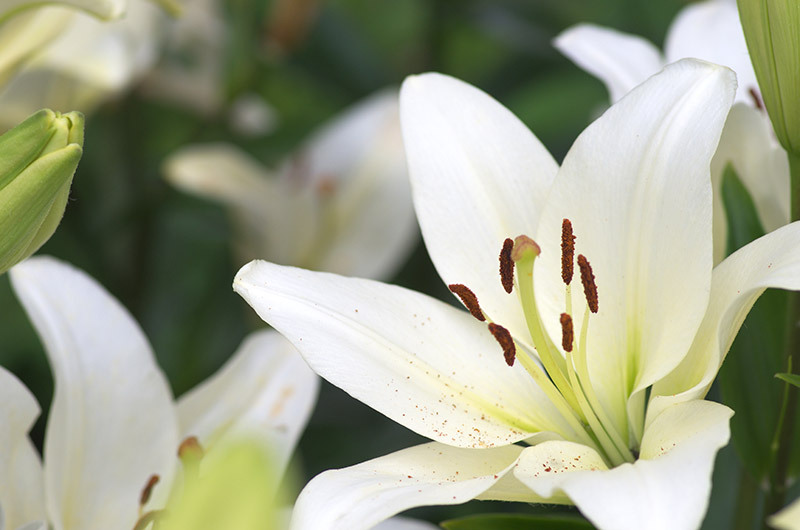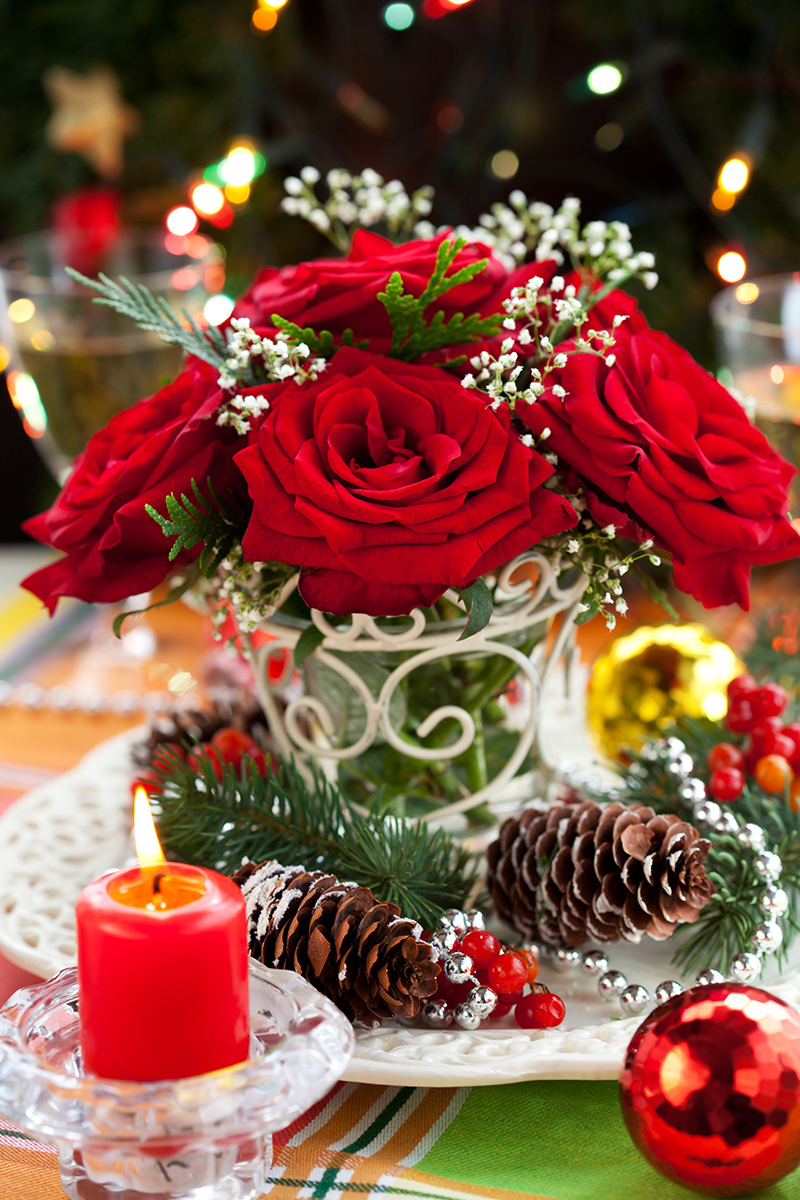Birth Month Flowers: A Beautiful and Gripping Tale
Posted on 18/08/2025
Birth Month Flowers: A Beautiful and Gripping Tale
Introduction: The Enchantment of Birth Month Flowers
For centuries, birth month flowers have captivated humankind with their irresistible charm, vivid beauty, and symbolic meanings. From ancient mythologies to modern celebrations, each month is associated with a unique flower, weaving a tapestry of stories, traditions, and emotion. In this enthralling journey, we'll explore the fascinating world of birth flowers, uncover their historical significance, examine their meanings, and discover how to cherish them in your everyday life.

The History and Origins of Birth Flowers
The idea of assigning specific flowers to each month has roots stretching back to ancient Rome and Greece. People believed that certain flowers held spiritual and medicinal properties related to the time of year they bloomed. Over time, these associations grew into a tradition akin to birthstones, with each month possessing a distinct floral emblem.
During the Victorian era, the "language of flowers", or floriography, gained immense popularity. Flowers represented feelings and messages that words alone could not convey. This poetic tradition reinforced the importance of birth flowers as gifts imbued with layers of meaning.
Discovering the Tale of Each Birth Month Flower
January: Carnation - A Blooming Start
Carnations (Dianthus caryophyllus), with their ruffled petals in myriad colors, symbolize love, fascination, and distinction. Legends say that the carnation's origins can be traced to the tears of the Virgin Mary. Today, they represent resilience, making them a perfect January flower-a month of fresh beginnings.
- Key meaning: Admiration, loyalty
- Colors and their symbolism: Pink (motherly love), white (purity), red (deep love)
February: Violet - The Promise of Spring
Soft, delicate, and associated with faithfulness and humility, violets (Viola spp.) herald the hope of spring. The ancient Greeks considered them a symbol of fertility and love. Today, gifting violets expresses deep loyalty and understated affection.
- Key meaning: Faithfulness, modesty
- Interesting fact: Violets have a sweet scent and were once popular in floral perfumes.
March: Daffodil - The First Sunshine
The radiant daffodil (Narcissus) is the quintessential symbol of rebirth and new beginnings, blooming as the first herald of spring. Steeped in Greek myth about the beautiful youth Narcissus, the flower symbolizes unwavering hope and is often given to cheer and inspire.
- Key meaning: New beginnings, rebirth
- Legend: Daffodils in a bouquet symbolize happiness and joy.
April: Daisy - Pure Joy
The simple, cheerful april birth flower-the daisy (Bellis perennis)-is a classic symbol of innocence and purity. In Old English, "day's eye" referred to the daily blooming habit. Daisies carry connotations of trust and childlike wonder, making them perfect for celebrating April birthdays.
- Key meaning: Innocence, hope
- Color variations: White petals with yellow centers most common, but many ornamental types abound.
May: Lily of the Valley - Scented Elegance
Known for their sweet fragrance and dainty white bells, lily of the valley (Convallaria majalis) symbolizes humility, sweetness, and a return to happiness. They appear in wedding bouquets and royal celebrations, most famously in the bridal arrangement of Princess Grace of Monaco.
- Key meaning: Happiness, humility
- Fun fact: They are sometimes called "May bells."
June: Rose - The Queen of Flowers
No other flower communicates love as potently as the rose (Rosa spp.). In literature and art, roses have long symbolized a broad spectrum of emotions-from passionate love to reverence and courage.
- Key meaning: Love, beauty, honor
- Color meanings: Red (love), yellow (friendship), white (innocence), pink (gratitude)
July: Larkspur - Lightness and Laughter
With its tall spikes and purple-blue hues, the larkspur (Delphinium) embodies positivity, dignity, and grace. Historically, it was used for protection against evil and celebrated as a symbol of an open heart.
- Key meaning: Cheerfulness, lightness
- Varieties: Blue is most common, but pink and white types are popular too.
August: Gladiolus - Sword Lily of Strength
The dramatic, sword-shaped gladiolus (Gladiolus communis) represents integrity, remembrance, and moral strength. The word "gladiolus" derives from the Latin gladius-meaning sword-alluding to its bold form and origins in Roman gladiatorial games.
- Key meaning: Strength of character, remembrance
- Flower fact: Gladiolus blooms in vibrant shades of pink, red, yellow, and purple.
September: Aster - The Star of Fall
September is crowned by the aster (Aster amellus), a late summer wildflower prized for its star-like shape and palette of purple, blue, and pink. To the Greeks, asters symbolized enchantment and patience, gracing gardens and tales alike.
- Key meaning: Love, wisdom, patience
- Fun fact: The name "aster" comes from the Greek for "star."
October: Marigold - Golden Warmth
The marigold (Tagetes) brings vibrant golden hues to the cooling October days. Associated with warmth, creativity, and remembrance, marigolds play prominent roles in global festivals, especially Mexico's Day of the Dead.
- Key meaning: Passion, creativity
- Tradition: Used in garlands and offerings across many cultures.
November: Chrysanthemum - The Flower of Nobility
The Chrysanthemum (often called "mum") is cherished in Eastern and Western traditions alike. In China and Japan, it's associated with longevity and honor. In Europe, it's linked with friendship and well-wishes.
- Key meaning: Loyalty, joy, abundance
- Festival: The Japanese hold annual chrysanthemum festivals each November.
December: Narcissus (Paperwhite) - The Gift of Good Fortune
December's birth flower is the narcissus, specifically the winter-blooming paperwhite (Narcissus papyraceus). This flower signifies hope, prosperity, and good wishes for the future, making it a fitting representation of the year's end and new beginnings.
- Key meaning: Hope, wealth, rebirth
- Culture: The Chinese give paperwhites as a New Year's blessing.
The Symbolism and Deeper Meanings of Birth Month Flowers
Not just pretty faces, birth flowers add unique depth to birthdays, anniversaries, and other celebrations. The tradition of gifting birth month flowers is more than a custom--it carries wishes of wellbeing, luck, and love. Every flower's color, scent, and season conveys a secret message, enriching the giver and receiver's emotional bond.
- Personalization: Each flower makes a gift that's thoughtful and meaningful.
- Emotional connection: The history and symbolism behind each bloom fosters deeper relationships.
- Legacy: Passing down knowledge of birth flowers keeps ancient traditions alive.
How to Incorporate Birth Month Flowers Into Your Life
Embracing the tradition of birth month flowers can be an enchanting and creative process. Here are some inspiring ideas for making these blooms part of your story:
- Bouquet Gifting: Celebrate birthdays, baby showers, and anniversaries with a bouquet featuring the recipient's birth flower for a personal touch.
- Floral Jewelry: Many jewelry designers offer pendants, rings, or charms shaped like birth month flowers--a lasting symbol of affection.
- Garden Planting: Dedicate a section of your garden to the birth flowers of your family members for a year-round reminder of love and connection.
- Home Decor: Showcase dried or pressed birth flowers in frames or displays for chic, meaningful decoration.
- Celebrations: Use themed birth flowers as table settings, cake designs, or party favors to brighten festivities.
Birth Month Flowers Around the World
The tradition of birth flowers is celebrated in diverse ways across different cultures:
- Japan: The chrysanthemum, Japan's imperial crest, is celebrated in the "Festival of Happiness" every November.
- Mexico: Marigolds play a starring role in Day of the Dead, honoring ancestors.
- UK and Ireland: The daffodil symbolizes new beginnings and is worn during St. David's Day.
- China: Narcissus and plum blossom feature in New Year traditions as omens of fortune.
These global traditions have helped birth flowers remain relevant, celebrated, and cherished across generations and continents.
Fascinating Facts About Birth Month Flowers
- The carnation is one of the oldest cultivated flowers, with records dating back over 2,000 years.
- Roses are among the world's most gifted flowers and boast thousands of varieties.
- The daisy can survive in the toughest conditions, representing resilience and hope.
- Larkspur is named after the shape of its flower, which resembles a lark's foot.
- Gladiolus are believed to have magical properties and were worn by Roman gladiators in battle.
Caring for Your Birth Flowers: Tips & Tricks
If you'd like to grow or care for your own birth month flowers, here are some simple guidelines:
- Know your climate: Some flowers thrive in cool weather (like violets), while others prefer warmth (such as marigolds).
- Soil and sunlight: Most birth flowers love well-drained soil and plenty of sunlight, though lilies of the valley enjoy partial shade.
- Water wisely: Overwatering or underwatering can harm delicate blossoms. Check your flower's moisture needs frequently.
- Pest protection: Watch for aphids, snails, or fungal diseases and use eco-friendly treatments to protect your blooms.
Growing your own birth month flower can be a delightful hobby, enriching your garden, home, and well-being.

Why Birth Month Flowers Make the Perfect Gift
Choosing a birth month flower for a loved one shows care, knowledge, and creativity. Unlike generic bouquets, these flowers carry unique symbolism related to the recipient's time of birth, making each gift personal and heartfelt.
- Timeless appeal: The tradition stretches back hundreds of years, lending each gift a touch of history.
- Customizable: Combine with other flowers or select colors to align with the recipient's taste.
- Educational: Each flower sparks curiosity and conversation about its story and symbolism.
Conclusion: The Enduring Allure of Birth Month Flowers
The story of birth month flowers is, above all, a beautiful and gripping tale. It weaves together the natural rhythms of the earth, ancient wisdom, personal meaning, and artistic beauty. By giving, growing, or learning about birth flowers, we celebrate more than a date on a calendar-we honor the richness of heritage and human connection.
Next time you're seeking an original, meaningful gift or wish to add depth to your celebrations, consider the magic of birth month flowers. Explore their stories, and let each unique bloom carry its message straight to the heart!
Frequently Asked Questions About Birth Month Flowers
- Can I give someone their birth flower even if it's out of season?
Yes! Florists can often source blooms regardless of the season, or you can represent birth flowers through artwork, jewelry, or dried versions. - Do birth flower lists differ in other countries?
Some cultures have unique traditions. The list in this article is widely used in the United States and Europe but may vary elsewhere. - Can birth flowers be used for special occasions other than birthdays?
Absolutely! Anniversaries, weddings, and new baby celebrations are perfect for incorporating meaningful birth blooms.
Explore, cherish, and continue the tradition of birth month flowers--because every month should blossom with beauty and meaning.
Latest Posts
Birth Month Flowers: A Beautiful and Gripping Tale
Delight in Florals: 5 Perfect Valentine Gifts
Breathe life into your office with these 10 easy plants
Explore the Intriguing Relation Between Your Birth Flower and You





